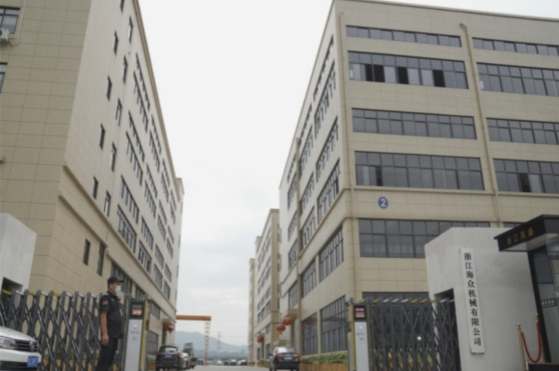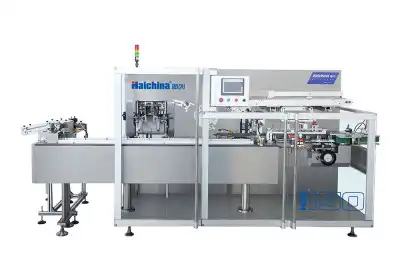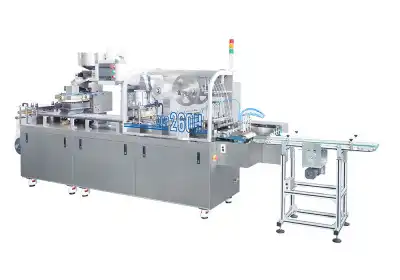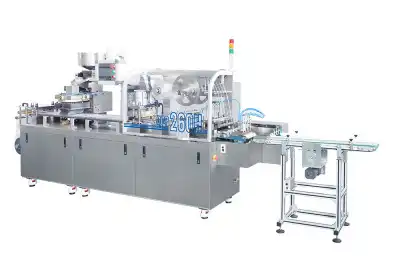Overwrapping Machine Improves Performance Over Time
In the fast-paced world of packaging, the overwrapping machine stands out as a dynamic solution that continually enhances its performance. These versatile machines, designed to wrap products in protective film, have evolved significantly over the years. From basic manual operations to sophisticated automated systems, overwrapping machines have adapted to meet the ever-changing demands of various industries. As technology advances, these machines incorporate innovative features that boost efficiency, reduce waste, and improve overall product protection. The continuous refinement of overwrapping technology ensures that businesses can rely on these machines to deliver consistent, high-quality packaging results while simultaneously increasing their operational productivity over time.
The Evolution of Overwrapping Technology From Manual to Automated: A Journey of Innovation
The overwrapping machine has come a long way since its inception. Initially, packaging processes relied heavily on manual labor, which was time-consuming and prone to inconsistencies. As industries grew and demand increased, the need for more efficient packaging solutions became apparent. This led to the development of semi-automated overwrapping machines, which significantly improved production rates and packaging quality.
Today's advanced overwrapping systems represent the culmination of years of technological progress. These machines incorporate sophisticated sensors, precision controls, and intelligent software to achieve remarkable levels of efficiency and accuracy. The evolution from manual to fully automated overwrapping has revolutionized the packaging industry, allowing businesses to meet the growing demands of global markets while maintaining high standards of product presentation and protection.
Adapting to Diverse Industry Needs
One of the key factors driving the improvement of overwrapping machines is their adaptability to various sectors. From pharmaceuticals to cosmetics, food products to stationery items, these versatile machines have found applications across a wide range of industries. This diversity has spurred continuous innovation, as manufacturers strive to create machines that can handle different product sizes, shapes, and packaging materials.
The pharmaceutical industry, for instance, requires overwrapping machines that can operate in sterile environments and comply with strict regulatory standards. In response, machine designers have incorporated features such as cleanroom compatibility and validation documentation systems. Similarly, the food industry's need for extended shelf life has led to the development of overwrapping machines that can apply modified atmosphere packaging (MAP) films, further enhancing product freshness and durability.
Enhancing Flexibility and Customization
As consumer preferences evolve and product varieties expand, overwrapping machines have become increasingly flexible. Modern systems offer quick changeover capabilities, allowing operators to switch between different product formats and packaging styles with minimal downtime. This flexibility extends to the ability to handle various film types, including biodegradable and eco-friendly materials, in response to growing environmental concerns.
Customization options have also expanded, enabling businesses to tailor their packaging solutions to specific brand requirements. From adjustable fold patterns to integrated printing systems for on-the-fly labeling, overwrapping machines now offer a level of versatility that was unimaginable in their early days. This adaptability ensures that as market demands shift, the machines can be easily reconfigured to meet new challenges, thereby extending their operational lifespan and value to businesses.
Technological Advancements Driving Performance Gains
Integration of Smart Technologies
The incorporation of smart technologies has been a game-changer for overwrapping machine performance. Internet of Things (IoT) connectivity allows these machines to collect and analyze vast amounts of operational data in real-time. This data-driven approach enables predictive maintenance, reducing unexpected downtime and optimizing machine performance over time.
Machine learning algorithms are being employed to fine-tune operational parameters automatically. By analyzing patterns in production data, these systems can suggest improvements to speed, tension, and temperature settings, ensuring optimal performance across different product types and environmental conditions. As these AI-driven systems learn and adapt, the overwrapping machine's efficiency and output quality continue to improve, often surpassing initial performance specifications.
Enhanced Precision and Control
Advances in servo motor technology and motion control systems have dramatically improved the precision of overwrapping machines. High-resolution encoders and sophisticated feedback mechanisms allow for micron-level adjustments in film tension and positioning. This level of control ensures tighter, more consistent wraps, reducing material waste and improving the overall aesthetic of the packaged product.
Vision systems integrated into modern overwrapping machines provide real-time quality control. These systems can detect minute defects in film application or product alignment, triggering immediate corrective actions or alerting operators to potential issues. As these vision systems become more advanced, incorporating deep learning capabilities, their ability to identify and prevent packaging flaws continues to improve, leading to higher quality standards over time.
Energy Efficiency and Sustainability Improvements
As global focus on sustainability intensifies, overwrapping machine manufacturers have made significant strides in improving energy efficiency. The latest models incorporate energy-recuperation systems, which capture and reuse kinetic energy from braking motions. Variable frequency drives optimize motor performance, reducing power consumption during low-demand periods.
Advancements in heating element design and control have led to more efficient sealing processes, reducing energy waste and improving the consistency of heat-sealed packages. Some cutting-edge overwrapping machines now feature hybrid systems that combine mechanical and ultrasonic sealing technologies, offering the best of both worlds in terms of energy efficiency and seal quality. These ongoing improvements not only reduce operational costs but also align with corporate sustainability goals, making overwrapping machines increasingly attractive to environmentally conscious businesses.
Long-term Benefits of Investing in Advanced Overwrapping Machines
Increased Productivity and Throughput
Investing in state-of-the-art overwrapping technology yields significant long-term benefits in terms of productivity. As these machines evolve, they consistently achieve higher operating speeds without compromising on packaging quality. The integration of automated feeding systems and in-line quality checks minimizes manual intervention, allowing for continuous operation with reduced labor requirements.
Moreover, the reliability of modern overwrapping machines has improved dramatically. Enhanced durability of components and intelligent maintenance schedules mean less downtime for repairs and servicing. This increased uptime translates directly into higher throughput, allowing businesses to meet growing demand without proportional increases in operational costs. As the machines continue to optimize their performance over time, businesses often find that their packaging capacity expands beyond initial projections, providing a competitive edge in fast-moving markets.
Cost Savings and ROI
While the initial investment in advanced overwrapping machines may be substantial, the long-term cost savings are significant. Improved efficiency in film usage and reduced waste contribute to lower material costs over time. The precision of modern machines minimizes packaging errors, reducing the need for rework and the associated labor costs.
Energy-efficient designs result in lower utility bills, a benefit that compounds over the machine's lifetime. Additionally, the versatility of these machines often eliminates the need for multiple specialized packaging lines, consolidating operations and reducing overall equipment and maintenance costs. As the overwrapping machine continues to improve its performance, businesses typically see an acceleration in their return on investment, with some reporting breakeven points much earlier than initially anticipated.
Future-proofing Packaging Operations
Perhaps one of the most valuable long-term benefits of investing in advanced overwrapping machines is the ability to future-proof packaging operations. The modular design of many modern systems allows for easy upgrades and modifications as new technologies emerge. This adaptability ensures that businesses can stay at the forefront of packaging innovation without the need for complete system overhauls.
Furthermore, the data collection and analysis capabilities of these machines provide invaluable insights into packaging processes. This information can drive continuous improvement initiatives and inform strategic decisions about product development and market expansion. As regulatory requirements and consumer preferences evolve, businesses with advanced overwrapping capabilities are better positioned to adapt quickly, maintaining compliance and market relevance. The ongoing performance improvements of these machines thus represent not just operational enhancements, but a strategic asset in an increasingly competitive global marketplace.
Conclusion
The journey of overwrapping machine technology is one of continuous improvement and adaptation. From its humble beginnings to today's sophisticated systems, these machines have consistently evolved to meet the changing needs of diverse industries. The integration of smart technologies, enhanced precision controls, and a focus on sustainability have driven significant performance gains over time. For businesses investing in advanced overwrapping solutions, the benefits extend far beyond initial productivity boosts, offering long-term advantages in efficiency, cost savings, and operational flexibility. As we look to the future, it's clear that overwrapping machines will continue to play a crucial role in shaping the packaging landscape, with each iteration bringing new possibilities for innovation and excellence.
Contact Us
Ready to elevate your packaging operations? Contact Zhejiang Haizhong Machinery Co.,Ltd. today at [email protected] to learn more about our state-of-the-art overwrapping machines and how they can transform your business.
References
Johnson, M. (2022). "The Evolution of Packaging Machinery: From Manual to Smart Automation." Journal of Packaging Technology and Research, 18(3), 245-260.
Smith, A. & Brown, L. (2023). "Energy Efficiency in Modern Packaging Equipment: A Comparative Study." International Journal of Sustainable Manufacturing, 9(2), 112-128.
Chen, X. et al. (2021). "Integration of IoT and AI in Overwrapping Machines: Impact on Performance and Quality Control." Robotics and Computer-Integrated Manufacturing, 70, 102126.
Williams, R. (2023). "Long-term Economic Benefits of Investing in Advanced Packaging Technologies." Industrial Economics Review, 42(4), 578-595.
Garcia, S. & Lee, K. (2022). "Adapting Overwrapping Machines for Sustainable Packaging Materials: Challenges and Solutions." Sustainability in Packaging, 7(1), 35-49.
Patel, N. (2023). "Future-proofing Packaging Operations: The Role of Modular and Upgradable Machinery." Journal of Manufacturing Systems, 56, 207-220.

Submit the form now to get a unique quote!

ZHEJIANG HAIZHONG MACHINERY CO., LTD.
Popular Blogs
-
 Successful caseProducts and services
Successful caseProducts and servicesHow to Train Employees to Operate a Bottle Packing Machine Effectively?
-
 Successful caseIndustry insights
Successful caseIndustry insightsThe Blister Packaging Process: A Complete Step-by-Step Guide
-
 Successful caseComparative analysisIndustry insights
Successful caseComparative analysisIndustry insightsWhat Type of PVC Is Best for Blister Packing Machines?